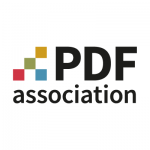
The case for PDF forms
Many organizations use PDF merely to offload printing to end-users. They miss out, because not only does PDF offer a potent platform for forms workflows, PDF includes unique capabilities that arent available in HTML.
 It's a common misconception that PDF forms are only useful for printing. Consider this recent news item from Malta:
It's a common misconception that PDF forms are only useful for printing. Consider this recent news item from Malta:
Addressing a conference as part of the Public Service Week, [the head of Maltas Civil Service] Mr Cutajar said application forms in PDF form would have to be printed out and sent by post or delivered by hand to the relevant departments.
We need to change these into electronic form, making them more accessible.
The reality is that PDF forms can also be electronically fillable, accessible and more. In fact, the PDF file format includes many valuable features that HTML forms cannot match.
Using PDF to transform workflows from paper to electronic
Its commonly (and correctly) stated that to make business processes more efficient they need to be electronic rather than paper based. Although many organizations - including (up until this point) Malta's Civil Service - are using PDF merely to offload printing to end-users, this is the least of PDF's capabilities.
There's far more to PDF, and to PDF forms, than driving a printer. Let's review.
Offline use and session-independence. Perhaps the most obvious capability of PDF forms; they may be filled and saved entirely offline, with no server connection. Compared to HTML, workflows leveraging PDF forms are far more tolerant of bandwidth interruptions, server outages or simply timeouts on a login, enabling longer and more complex forms. PDF makes it possible to start a form in the office and finish it later that evening, or while sitting on a plane.
Flexible, durable workflows in which the form is both capture tool and resulting record. It's not always easy to predict how forms will be used "in the wild". Some forms may only be partially filled, or users may decide to add other steps (such as an internal review, or submission via email with other attachments) that the workflow designer didn't anticipate. If they need it, PDF technology allows organizations to treat each stage in the forms completion as an independent document of record, if necessary.
Archive-ready. PDF/A, the archival subset of PDF technology, provides a means of ensuring the quality and usability of conforming PDF pages (including PDF forms) without any external dependencies. PDF/A offers implementers the confidence of knowing that conforming documents and forms will be readable 10, 20 or 200 years from now.
Output as well as input. Used to capture data from users, HTML forms are exclusively interactive. PDF forms work well for data-capture, but are also commonly used to output database information in variable and transactional processes; especially when the end-product is a regulated document. Uses for PDF forms to generate documents from database records are legion; from insurance claims to medical prescription labels.
Human and machine-readable information in a single file. PDF forms facilitate a rich use of the distinction between the human-readable form itself and the forms data. PDF forms data may be managed locally, by interaction with a server, or a combination.
Integrated digital signatures. Digital signatures provide PDF users with powerful tools to identify the forms author, or users, provide assurance against tampering, and even allow for on-demand signature verification and (if necessary) revocation. Since PDF files are independent objects rather than an on-demand assembly of HTML, CSS and JavaScript, PDF documents may include as many digital signatures as may be required without adding overhead.
Works well for users at any technology level. Most users of interactive PDF forms will be able to type into form-fields, select from checkboxes or list-boxes, submit the form and so on. Other users may be limited by connectivity, information or custom, and may prefer a printed, or filled, printed and ink-signed solution. PDF can accommodate all of the above using the same file, and facilitates a smoother, broader on-ramp to more connected and collaborative workflows.
Vendor independence due to open technology based on ISO standards. Tired of being locked into proprietary technology? Everything about classical PDF forms (Acroforms) technology is fully ISO-standardized. Not only are the forms themselves completely defined in ISO 32000, but the JavaScript functionality available to PDF forms is also an ISO document, to be published in early 2017.
Unlimited flexibility. Yes, PDF can always be used in paper-based "print, fill, sign and mail" applications, but the format's flexibility runs deep. PDF forms can support annotations, so users can add notes outside of the form-fields. Users can add new pages to the form, replace pages, or add other files as attachments. Workflow designers can opt to have just the forms data returned to the server, or the entire document.
Which forms technology?
As always, its a question of needs. For many business process management (BPM) applications, HTML is the right way to go. HTML forms are simple, lightweight and responsive; ideal for shorter and/or highly dynamic forms, and where tight integration with a website is essential.
For applications that require flexibility in the workflow itself, PDF forms deserve a long look.
Back to Malta
As they must serve a diverse set of users, government workflows in particular deserve careful consideration prior to any change. Non-interactive PDF application forms are often, as Mr. Cutajar indicates, a source of inefficiency, but PDF also offers many advantages unmatched by other forms technologies.
There are thousands of independent PDF technology service providers, integrators and consultants who will be only too happy to help Malta's Civil Service transition from paper-centric forms to flexible, powerful PDF electronic forms.
PDF Association members to the rescue!




